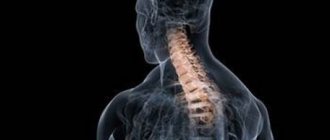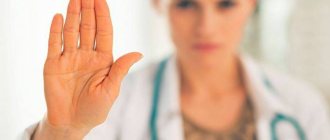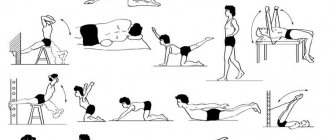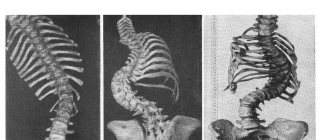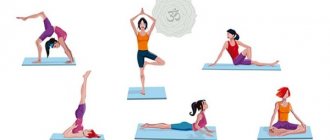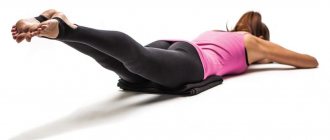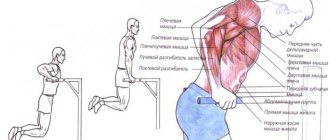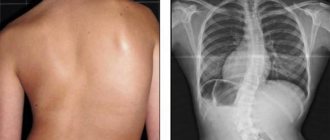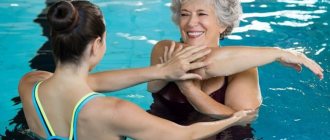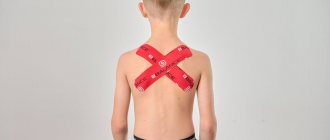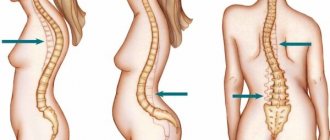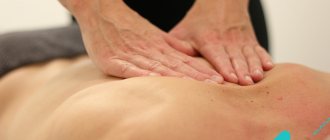Types of support corsets for scoliosis
Several types of orthopedic products are used to treat spinal curvature.
Their use depends on the stage and form of the disease. Corsets for the treatment of scoliosis are of the following types:
- Supportive products reduce the load on the spinal column, reduce the intensity of pain, and selectively reduce muscle tone. It is used in the initial stage of the disease or in the prevention of spinal curvature. It is recommended to wear it for six months. Subtypes of these products are reclinators, thoracic and thoracolumbar corsets.
- Corrective devices are used to correct deformities of the spinal column and prevent scoliosis from progressing. They are used in the advanced and late stages of the pathology. They are made only according to individual parameters after measuring the patient’s body. Varieties of these devices are the Chenault, Milwaukee, Lyon, and Boston models.
The type of corset and the mode of its use are determined only by an orthopedic surgeon.
Content:
- Reasons for use
- Need for use
- Types of Posture Corsets
- Functions of posture corsets
- Selection rules
- Summary
For various back diseases and curvature of posture, orthopedists recommend using special corsets. They help maintain the correct position of the back, bring the shoulder blades together, and reduce pain. There are several types of devices, so it is recommended to prepare and learn how to choose a posture corrector.
How does a corset work for scoliosis?
The principle of operation of any corset is to maintain the spine in a given position.
The main tasks that a posture corrector solves:
- Applying pressure to those areas of the spinal column that have undergone curvature. This allows you to stop its further deformation.
- Fixation of the spine in an anatomically correct position.
- Reducing the load on the part of the spine that is affected by scoliosis.
- Reduction of pathological activity of the spine.
- Developing skills in correct physiological posture.
Reasons for use
The following symptoms are identified at which it is advised to start wearing a corset:
- backache;
- weakening of muscles;
- curvature of the spine, scoliosis, excessive kyphosis and lordosis;
- back discomfort when straightening the spine.
The device is recommended for use in the following cases:
- prevention of spinal curvature;
- therapy for postural disorders together with massages and exercise therapy;
- rehabilitation period after injuries or surgery on the thoracic spine.
Patients cannot purchase every corset they choose. It is selected depending on the diagnosis, having learned how to choose a corset for posture.
Classification
In addition to the forms (congenital and acquired) and sides of curvature (left-sided and right-sided), the disease is classified into degrees. Based on the severity of the detected deformations, they are divided into four.
Table. Degrees of kyphoscoliosis.
| Degree | Characteristic |
| First | This degree is the beginning of a pathological process in which the angle of curvature does not exceed 55 degrees and kyphosis prevails. The curvature has an anteroposterior direction, the scoliotic displacement to the side is insignificant. Rotation (the process of twisting the vertebrae) is also insignificant. |
| Second | The anteroposterior curvature has a larger angle - up to 65 degrees. Scoliotic curvature and rotation become more noticeable. |
| Third | The kyphosis angle reaches 75 degrees. The vertebrae are strongly twisted, and the lateral curvature is clearly expressed. The vertebral hump begins to develop and the chest is noticeably deformed. |
| Fourth | Everything is getting worse and reaching critical levels. The angle of curvature exceeds 75 degrees. The hump is in an active growth phase. The distortion of the shape of the chest increases so much that problems with the heart and breathing begin. |
Need for use
If you start using a corset, the load on your back muscles is reduced. With its help, muscle tissue tries to independently regulate the position of the back. When wearing a corset, a person experiences discomfort if he begins to slouch. Therefore, he tries to automatically keep his back straight.
The use of a corset cannot be the only method of therapy. An integrated approach to treatment is used. This could be medications, various sports, swimming, massage.
It is especially important to start using a corset in childhood, since it is at this time that correct posture is formed. Parents need to know how to choose the right posture corrector
.
Many children, when they come to school, begin to slouch due to constant sitting at a desk, carrying a heavy backpack or bag over one shoulder. The back condition gradually worsens, reaching a peak in adolescence. An orthopedist will tell you how to choose a posture corrector for a teenager. The brace will help them keep their back aligned throughout the school day.
Types of Posture Corsets
There are three types of devices that can be used to improve posture.
- Chest bandage
. Designed for children from 4 years old and adults. Used to correct posture in the thoracic area. Helps eliminate asymmetry. The maximum width of the device is from 4 to 11 vertebrae. If necessary, stiffeners can be added. If additional adjustments are required to the shoulders, add top straps. The bandage is selected depending on the circumference of the chest. If it sits weakly, the disease cannot be corrected; if it sits too tightly, the curvature will develop faster.
- Reclinator
. Used to prevent spinal curvature or its initial stage. Suitable for adults and children. Using it, you can achieve shoulder separation. The device is made in the shape of a figure eight. Its middle part is located on the spine, and the edges of the eights capture the shoulders. Depending on the degree of stoop, soft or hard loops can be used. The service life of the device is 3-4 months, after this time the loops weaken.
- Thoracolumbar fixator
. This is a device that combines a chest bandage and a reclinator. It is long, so it covers part of the lower back. The device corrects uneven shoulder blades, scoliosis, kyphosis or lordosis of 1st and 2nd degree. It includes a semi-rigid corset and a shoulder recliner. The corset is fixed on the stomach using Velcro. Therefore, you can choose the most suitable diameter.
Each corset has its own areas of application. Therefore, before purchasing, you should consult your doctor to find out which posture corrector to choose.
Functions of posture corsets
If you use the corset throughout the therapy, the following effects will appear:
- shoulder tightening;
- elimination of spinal asymmetry;
- fixing the shoulder blades in the desired position;
- muscle girdle support;
- elimination of kyphosis and lordosis to moderate severity;
- prevention and treatment of spinal curvature.
A corset may not help with all diseases, for example, with a high degree of scoliosis. In this case, they will find out what kind of corset is possible for scoliosis, what the degree of the disease should be.
Selection rules
When choosing a device, you must follow some rules on how to choose the right posture corset in order to prevent or correct curvature.
- A preliminary consultation with a doctor who will help you choose a model depending on the diagnosis and will tell you how to choose a posture corset for an adult or child.
- Reclinators are more suitable for prevention, and for treatment – chest bandage
or thoracolumbar brace.
- If the patient has a serious degree of spinal damage or is in the rehabilitation period after surgery, it is recommended to add stiffeners.
- To make the corset fit better on the back, shoulder straps are added. This way it won't slide off.
- Selection of quality fabric. The main component should be cotton. Elastic components are added to it so that the corset can stretch. When using it, no allergic reactions should occur, the skin should breathe. The use of high-quality materials is one of the important points in how to choose a posture corrector for an adult or child.
- Before going to the store, you should measure all the parameters of your torso so as not to choose a corset that is too large or small. A person will know which posture corrector to buy.
A corset is an orthopedic device that helps correct spinal curvature. It is used in complex therapy with other treatment methods. You need to know how to choose a corset for posture so that a person does not experience allergic reactions, chafing on the skin, or deterioration in well-being during its use.
The benefits of wearing a corset
Thanks to the use of a corset for scoliosis, the following positive aspects can be achieved:
- Stop further development of the disease.
- Develop a strong skill of holding the spine in the correct position.
- Stretch your spine if necessary.
- Improve the functioning of internal organs, in particular the lungs and heart.
- Relieve back muscles that are hypertonic.
Despite the fact that corsets for scoliosis can have a pronounced therapeutic effect, their use may be contraindicated for some patients. For example, they cannot be worn for diseases of a dermatological nature, when the skin requires regular care and treatment. Friction of the corset can lead to aggravation of the existing pathology. Therefore, before you decide to purchase a corset to correct your posture and treat scoliosis, you should consult your doctor.
Symptoms
Even if it is congenital, kyphoscoliosis is usually not diagnosed before the age of six months. More often the disease is detected closer to one year. The visual manifestation begins with the appearance and appearance of a hump on the baby’s back.
Why is it almost impossible to detect kyphoscoliosis in an infant? Because at the initial stage, it is possible to visually notice the curvature only when he takes a vertical position, that is, sitting or standing. If the baby lies down, it disappears. Further, as the disease progresses, the curvature becomes persistent and ceases to depend on the vertical or horizontal position.
One of the early manifestations of the acquired form of the disease can be considered a change in posture. The teenager begins to stoop, experiences pain in the back and may voice complaints about unpleasant sensations.
Even with a slight deformation of the chest area at the initial stage, shortness of breath is already possible, which is not pronounced and appears after physical activity. The rate at which the disease progresses may differ for each patient. It depends on the individual characteristics, causes and timeliness of its treatment.
Upon examination, the following symptoms are revealed:
stooping (the so-called round back);
- the shoulders also protrude forward, as if they are being pulled down;
- the chest is narrowed;
- the spine is deviated from its axis;
- the intercostal spaces in the side opposite the scoliotic curvature are expanded;
- if there are neurological complications, sensitivity is reduced, muscle strength decreases, tendon reflexes are inhibited;
- abdominal muscles are weakened.
What are the complications?
In addition to direct symptoms, the disease has many complications. When the spinal column is abnormally shaped, it cannot function as it should. This causes the spinal structures and the muscles that support them to constantly experience overload. As a result, in parallel with kyphoscoliosis, the following is formed:
Since these diseases, in turn, cause pinched nerve roots, skin sensitivity is impaired, motor dissonance occurs, and the pelvic organs begin to function improperly.
When the structural shape of the chest changes, its normal mobility is lost. The diaphragm stops functioning normally. The load on the muscular apparatus of the lungs changes. Because of this, their volume decreases sporadically, and, due to impaired gas exchange, the blood becomes oversaturated with carbon dioxide, and there is insufficient oxygen in it.
When the disease is kyphoscoliosis in the second degree and higher, a deformation of the chest is formed on such a scale that its appearance entails significant impairment of pulmonary and cardiac functions.
As a result of global disturbances in the functioning of the digestive system, biliary dyskinesia, cholecystitis and other pathologies may occur.
Massage
For first-degree scoliosis, special medical techniques are used. The reason is nervous tension in the spinal muscles. On the side of the convexity they are weakened and elongated, on the opposite side the muscles are unusually tense and shortened. In addition, it is necessary to massage the entire body, and not just the curvature area. Massage relieves muscle tension and improves microcirculation in soft tissues.
Self-massage for scoliosis is contraindicated. This should only be done by a specialist. With incorrect massage movements, the situation can only get worse.
Signs and symptoms of grade 1 scoliosis in children and adolescents
During a clinical examination by a doctor and an X-ray of the spine, the deviation of the spine from the normal axis can be measured - with scoliosis of the 1st degree, this deviation will be no more than 10 degrees. This degree of scoliosis is also characterized by initial degree torsion.
What signs and symptoms indicate the presence of grade 1 scoliosis in a child?
1. Noticeable asymmetry of the child’s shoulders, a little less often – asymmetry of the pelvis. 2. The child’s stoop, incorrect posture. 3. Lumbar scoliosis can manifest as asymmetry around the child’s waist. 4. Increased lordosis. 5. When lying on the stomach, the curvature and asymmetry disappear; when the child gets up, they appear again.
Comparative table of posture correctors for children and teenagers
| Model | Manufacturer country | Rating on Yandex Market | Price | Material | Dimensions | Stiffening rib | Floor |
| Orto KO 110 for children | Russia | 4.5 | from 1660 RUR | Metal, textile | 1, L, M, S | 2 | Unisex |
| Trives T.54.01 (T-1778) | Russia | 4.5 | from 980 rub. | Plastic, textile | L, M, S, XL, XS | 4 | Unisex |
| CRATE E-14 | Russia | 4.8 | from 800 rub. | Metal, textile | 1, 2 | 2 | Unisex |
| Orlett TLSO-250(P) | Germany | 4.8 | from 3100 rub. | Metal, textile | L, M, S | 2 | Unisex |
| Orto KO 102 for children | Russia | 5.0 | from 784 rub. | Plastic, textile | XS, XXS, XXS/XS | — | Unisex |
| KGK 110 children's | Russia | 4.4 | from 2340 rub. | Metal, textile | L, M, S | 4 | Unisex |
| Posture master for children | Russia | 4.0 | from 4600 rub. | Plastic | — | — | Unisex |
Can a child with stage 1 scoliosis play sports?
If a child is diagnosed with stage 1 scoliosis, parents must properly find recreational sports for him.
• With grade 1 scoliosis, all sports with asymmetrical or excessive load on the spine are harmful to the child - rhythmic gymnastics, figure skating, choreography, weightlifting, etc. • A child with grade 1 scoliosis benefits from all types of sports that have a general strengthening effect and are aimed at overall physical development - swimming, oriental dancing, fitness, martial arts.
When a child enrolls in a sports section or school, the coach must provide recommendations from an orthopedic doctor about the admissibility of physical activity.
Diagnostics
An orthopedic doctor can diagnose “scoliosis” based on an examination of the patient. Each pathological process gives a specific clinical picture and is the basis for diagnosing the degree and stage of changes in the spine. The doctor pays special attention to: the presence of asymmetry of the shoulder blades, ribs and hips, as well as the displacement of the spinal column from the physical axis. Diagnostics is carried out in the following positions:
- Standing position with arms down the body;
- The patient leans forward 90 degrees.
To verify the diagnosis, the patient is prescribed an X-ray of the spine. These measures are sufficient not only to establish an accurate diagnosis and identify the extent of the disease, but also to identify possible concomitant pathologies.
Exercise therapy
Physical exercise plays a major role in the treatment of first-degree scoliosis. They help strengthen muscles and stabilize the development of the spinal column. But it is worth keeping in mind that overloads can have a negative effect; they increase the instability of the motion segments and lead to progression of the deformity.
The principles of physical therapy are based on an individual approach to each patient. The greatest effect of exercise therapy is observed at the initial stage of scoliosis.
Exercises are selected by a physical therapy doctor; the purpose of the exercises is to strengthen muscles and correct curvature. Physical rehabilitation techniques in a large percentage of cases lead to an improvement in the configuration of the spine. In addition, it is recommended to perform respiratory exercises, swim and go for a massage.
What it is
This combined deformity has noticeable symptoms. It can be congenital, and then kyphoscoliosis can be diagnosed in an infant aged six months (begins to sit and stand on his feet). If the disease is acquired, it is difficult to recognize it at an early stage, but it is possible to diagnose pathologies that can cause it.
Deformations in kyphoscoliosis, especially in the second and subsequent stages, are visible to the naked eye. In addition to the fact that external manifestations are noticeable, the patient feels pain. Since not only the back, but also the chest changes shape, shortness of breath may occur. Cardiac activity is impaired.
When making a diagnosis, all of the above symptoms are taken into account. To clarify the details, radiography, CT or MRI are prescribed. Kyphoscoliosis is treated conservatively if the disease is not yet in the last stage. In later stages, surgery may be necessary.
